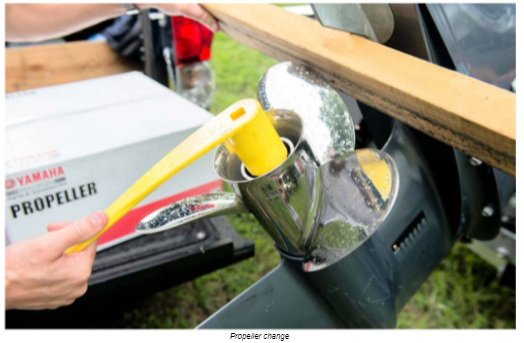Choosing the right propeller is one of the most important things you can do for a motors longevity, regardless of the manufacturer or model. Not only is it important to initially choose the right prop, it is important to know when an adjustment to the prop might be necessary at any point in the life of the motor. This article will help you understand how props impact the operation of the motor and the boat as well as some common issues that indicate a prop should be adjusted.
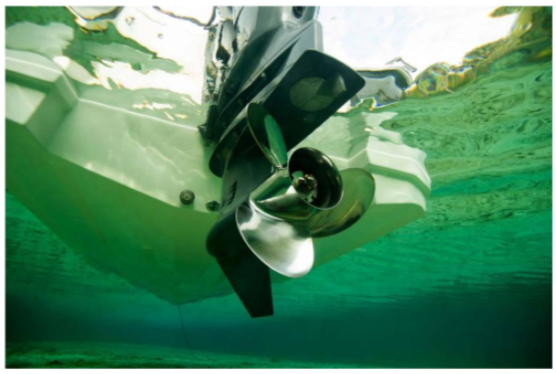
How Propellers Work
Propellers have two main functions: pulling and pushing water. They use both sides of the blade to do this. The side with the pushing force is known as the positive side, and the side pulling or drawing water to it is known as the negative side.
The negative side of the blade will generally have water coming to it while underway. But if you’re constantly shifting the motor back and forth while the boat is tied to the dock, you may stall the engine. If the boat is tied to the dock the prop needs to pull water to it. The positive side is forcing water against a standing water column, and since the boat is not moving, this creates additional stress on the engine. These two factors combined may cause the engine to stall.
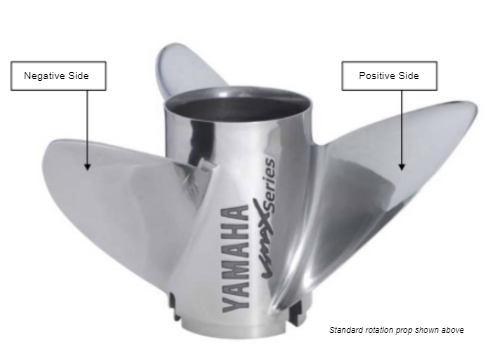
Identifying Propeller Issues
To determine prop-related issues, you must test the boat on the water. Certain issues like excessive or insufficient RPM, or needing passengers to move to the front of the boat to lower the bow when getting on plane, may indicate a problem with the prop.
Tip: Many variables can cause operational issues, but for the purposes of this article, we will focus on propping issues only. In the following examples, assume the motor is in excellent operations condition, has the correct installation height, and has no abnormalities. Also, assume the boat bottom is clean (i.e. no hooks, rockers, barnacles, thru-hull fittings, etc.)
Propeller Issue: Too Small
Excessive RPM is a sign of a too small prop. The diameter, pitch, blade design, etc. can all be too small for a specific application, just as they can all be too large. If any of these variables are too small or insufficient, the propeller will not properly load the motor. This can cause significant catastrophic failures. Correct loading is necessary.
A prop that’s too small can give you great holeshot, but it will only lose speed on the top end and bounce off the rev limiter. It will also have excessively higher than normal RPM in the midrange, lightly loaded.
Consider, for example, a vehicle with a manual transmission. When cresting a hill, there is a point when you can let off the gas and the vehicle will start costing. When the load is taken off the transmission, you will usually notice some funny noises and vibrations. Once the rear-end RPM overcomes the reduced-engine RPM, the noises go away because the gears are now under load again (from the opposite side).
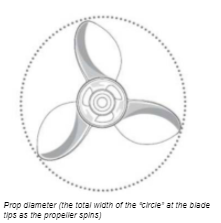
However, if you constantly run the vehicle without enough load, the gears, shafts, bearings, splines, and piston skirts will all take a beating. If the engine is equipped with an RPM limiter, this intensifies the issue by knocking out cylinders (hence additional vibration, which is not a pleasant experience). This theoretically saves the engine from failure, but even more importantly, it notifies the operator something is not right and needs their attention.
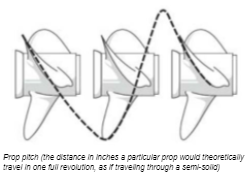
Propeller Issue: Too Large
A lack of RPM indicates that the prop is too large. An excessively large propeller can lower the wide open throttle (WOT) RPM significantly and cause excessive loading. This will also cause catastrophic failures.
In carbureted engines, fuel delivery is related to the vacuum on the backside of the venturi. Although the throttle plate can be wide open and the RPM greatly reduced, the air speed flowing through the venturi would be decreased, air volume would be increased, and the amount of fuel would be decreased. Keep in mind, the low-pressure area draws fuel to it based on the amount of vacuum, and fuel volume is metered by a fixed jet. If the throttle plate is wide open, the engine RPM is reduced due to prop size, and vacuum is reduced because the RPM is lower, therefore you will get less fuel. Less fuel can cause a lead condition and possible detonation. The detonation sensor will kick in to try and save the engine, creating vibrations.
The same principle applies to electronic fuel-injected (EFI) motors where the fuel injector output is metered by the RPM, the throttle position sensor (TPS), and barometric pressure. EFI motors have mapping programs to deliver fuel based on a speed/density program. The mapping programs rely on correct propping. Running “off the map” causes problems. Having a too-large propeller will result in higher exhaust temperatures that burn out mufflers, blocks. extension plates, tuners, and prop hubs. Higher temperatures contribute to detonation and preignition as well. Consequences include major engine damage due to stress on all internal components, including the bearings and gear in the lower units. Though marine engines run in a continually stressed mode, additional stress results in failures.
Selecting The Best Propeller
“As a general rule, the correct propeller will allow your engine to reach the upper portion of the wide open throttle range specified by the manufacturer without exceeding it, with a normal-to-heavy load. For example, if your outboard says WOT is 5000-6000 RPM, you need a prop that will allow your engine to turn between approximately 5700 and 6000 RPM with your average load in the boat. Be sure to account for things such as fuel, full bait and/or live wells, batteries, passengers, and all gear, including safety gear (anchors, ropes. fire extinguishers, etc).
After choosing and installing a new prop, test the boat the way you would use it. If you are a charter captain, run the boat with people, and a full complement of fuel and ice-filled coolers. This can add approximately 2000 lbs to the boat. Account for your trimming preferences as well. During the test, confirm the motor is running at the upper end of the RPM band. it should be close to, but not exceeding, maximum RPM at a moderately trimmed WOT.
Not ever running at the upper end of the RPM band can cause a problem in itself. Running in the midrange with excessive loading can cause extensive damage. Extra load can come from many factors such as added bottom paint, electronics, gear, wind, and passengers. When switching to the right prop, customers may go from running 5400 RPM to 6000 RPM at WOT but lose 1 mile per hour of speed in the process. This may frustrate some customers, but losing a small amount of speed is a small tradeoff to ensure the motor’s longevity. Make sure to educate customers accordingly.
Correct loading keeps components in their proper state and temperature while running. All manufacturers have stated RPM ranges for operational characteristics (pay attention to details as some manufacturers include different ranges for light boats or heavier barges). Just because a propeller comes with a boat, it does not mean that it is the correct prop for the application. The motor manufacturer and the boat manufacturer do not know how the vessel will be ultimately outfitted or used. It’s up to the technician, dealer salesman, and customer to ensure the unit is propped correctly. Remember, engine failures due to incorrect propping are not warrantable issues.
